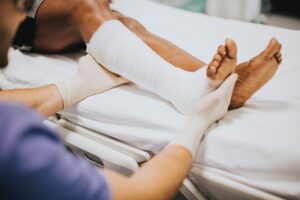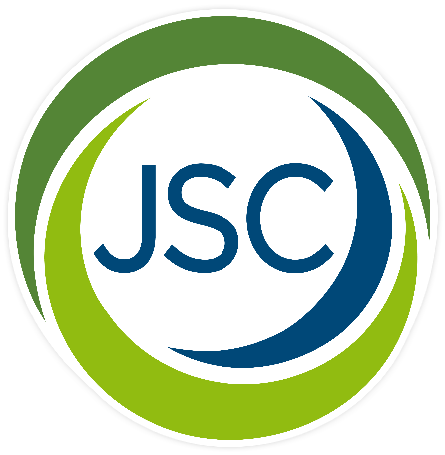 Orthopedic specialists are well acquainted with exploring the possibilities of change. Within the field of medicine, orthopedists are known for their early adoption of technology and willingness to consider new techniques to improve patient outcomes. Over the last several decades, technological innovations and instruments have completely transformed the way many orthopedic surgeries are performed, resulting in less invasive procedures and faster recovery times for patients. Now, as the healthcare industry undergoes a shift from fee-based services to value-based care, orthopedic specialists and leaders must apply that same spirit of adaptability to their professional worldview as they continue to work toward providing the best care possible.
Orthopedic specialists are well acquainted with exploring the possibilities of change. Within the field of medicine, orthopedists are known for their early adoption of technology and willingness to consider new techniques to improve patient outcomes. Over the last several decades, technological innovations and instruments have completely transformed the way many orthopedic surgeries are performed, resulting in less invasive procedures and faster recovery times for patients. Now, as the healthcare industry undergoes a shift from fee-based services to value-based care, orthopedic specialists and leaders must apply that same spirit of adaptability to their professional worldview as they continue to work toward providing the best care possible.
As a whole, orthopedic surgeons are growing older. In 2008, the average age was 50.7 years old; in 2016, the average age had increased to 56.48 years old. And while many other specialties have moved toward a more balanced gender ratio of medical graduates, today the vast majority of orthopedic surgeons are still men. A recent report published by the American Academy of Orthopedic Surgeons (AAOS) noted that the number of female orthopedic surgeons in their ranks was less than 7%. Currently, 14% of orthopedic surgery residents are female. An article from The Journal of Bone & Joint Surgery posited that the lack of female orthopedic surgeons in leadership positions within medical schools was detrimental to the recruitment of female medical students and suggested increasing female medical students’ exposure to orthopedics and female mentors in order to attract more women to the field.
The demand for orthopedic specialists is significant and will only continue to increase as the population ages. In the United States, more than half of all adults are affected by musculoskeletal diseases, and the most commonly reported conditions are trauma, back pain, and arthritis. Musculoskeletal issues are even more prevalent in older portions of the population, affecting almost 75% of those over the age of 65. The U.S. Census Bureau projects that in the next 40 years, the American population aged older than 65 will increase from 15% to 24%, and those aged 80 years and older will double, from nearly 4% to 8%. According to a recent blog post from Harvard Medical School, orthopedic surgeons currently perform over 600,000 knee replacements and approximately 330,000 hip replacements annually in America. Those numbers will undoubtedly climb in the years to come.
Over the last several decades, technology, research, and innovation have played an essential role in furthering the field of orthopedics. A recent Orthopedics Today article highlighted some of the most significant advancements, including the development of arthroscopic devices to diagnose and treat intra-articular pathologies, better joint replacement materials and procedures, and increasingly sophisticated imaging technologies, including ultrasound, digital x-rays, and CT and MRI 3-D modeling. It is estimated that almost 80% of orthopedic procedures can now be performed in an outpatient setting. The innovations mentioned previously were developed over the course of three decades, but the pace of technology production has sped up considerably in the last few years. While the possibilities are exciting, the American Academy of Orthopedic Surgeons (AAOS) also urges caution. Their position statement on emerging technologies and medical devices encourages orthopedic surgeons to seek continued progress through innovation while also exercising due diligence, clearly communicating benefits and risks to patients, and tracking and sharing patient outcomes.
Analyzing patient outcomes to determine best treatment practices is a core tenet of implementing value-based care, the emerging model within the healthcare industry. The value-based care model will also influence the production of new medical technology, giving an edge to orthopedic device companies that can offer innovative products at an acceptable price. “Current innovations will need to solve unsolved problems or offer solutions to existing problems that deliver better outcomes and lower overall cost,” notes Scott D. Boden, MD, Chairman, Department of Orthopedics, Emory University School of Medicine, VP of Business Innovation, Emory Healthcare. As organizations and industries shift to accommodate this new paradigm, leaders and providers that are willing to adapt and collaborate to provide the best results for their patients are required. This is certainly true of those in the field of orthopedics, whose expertise, skills, and leadership will be increasingly needed in the coming years.
At Jordan Search Consultants, we understand the importance of skill, personality, and cultural alignment when it comes to matching candidates to an organization. If you need help finding the right fit, call us at 866-750-7231 or email us here.


